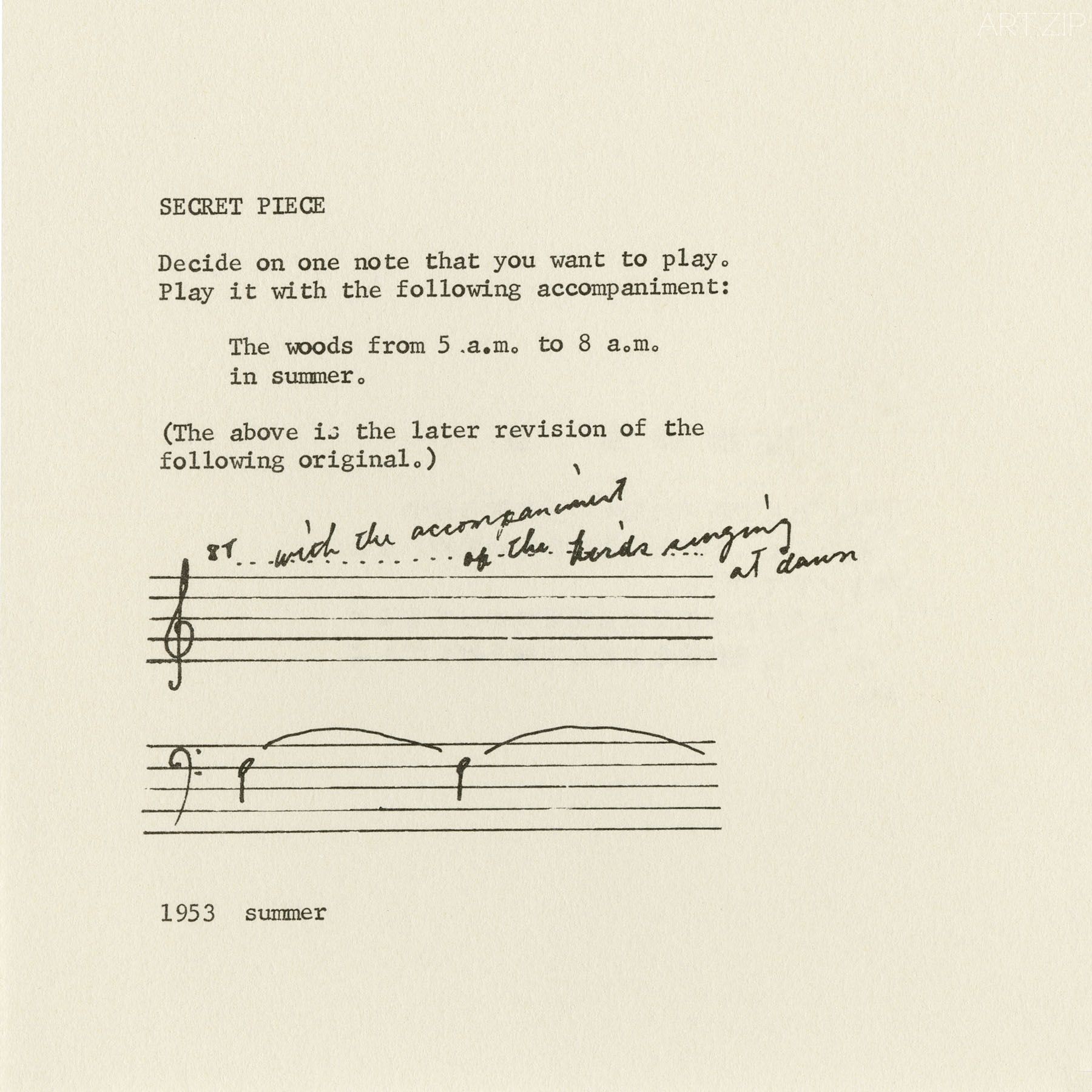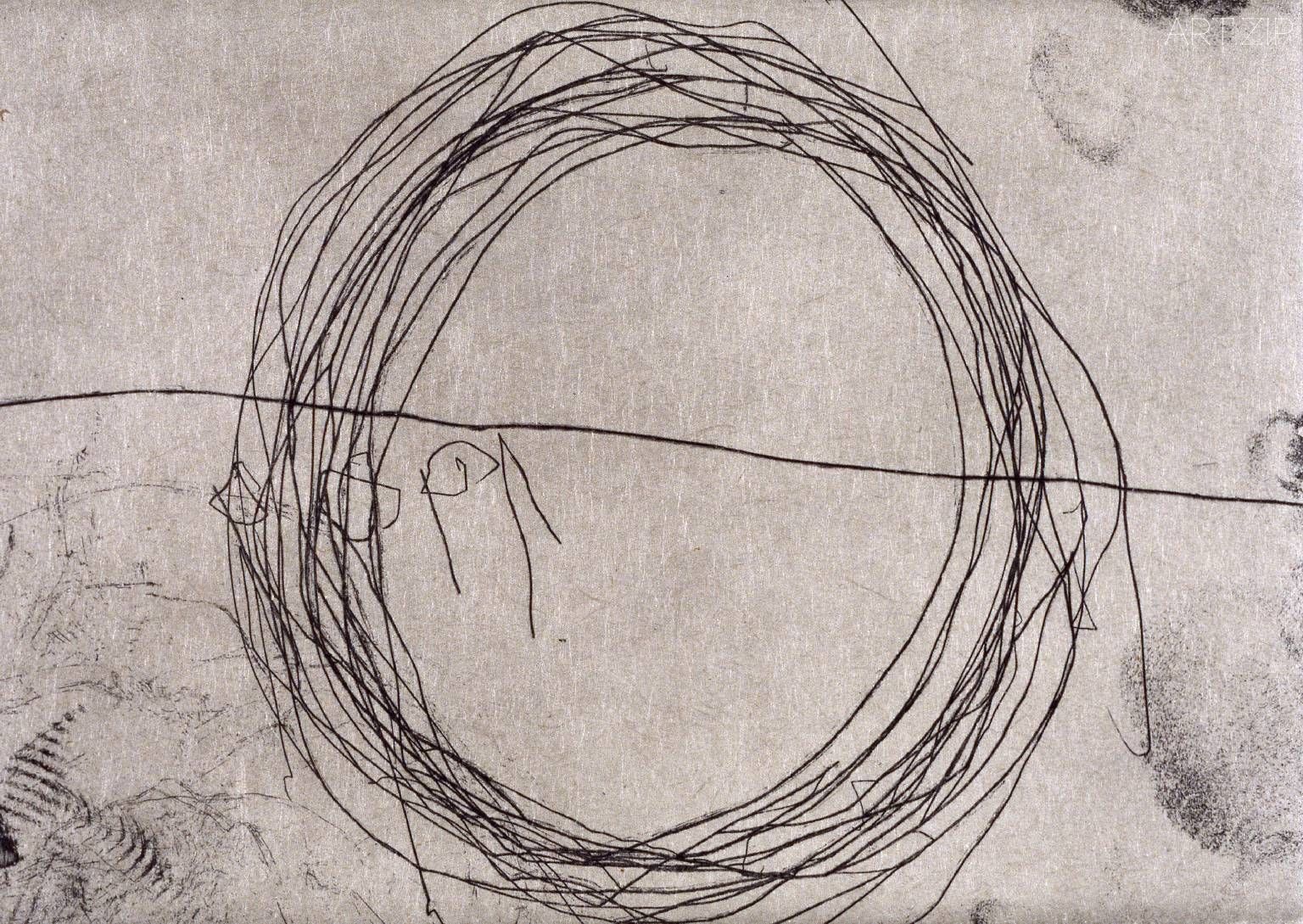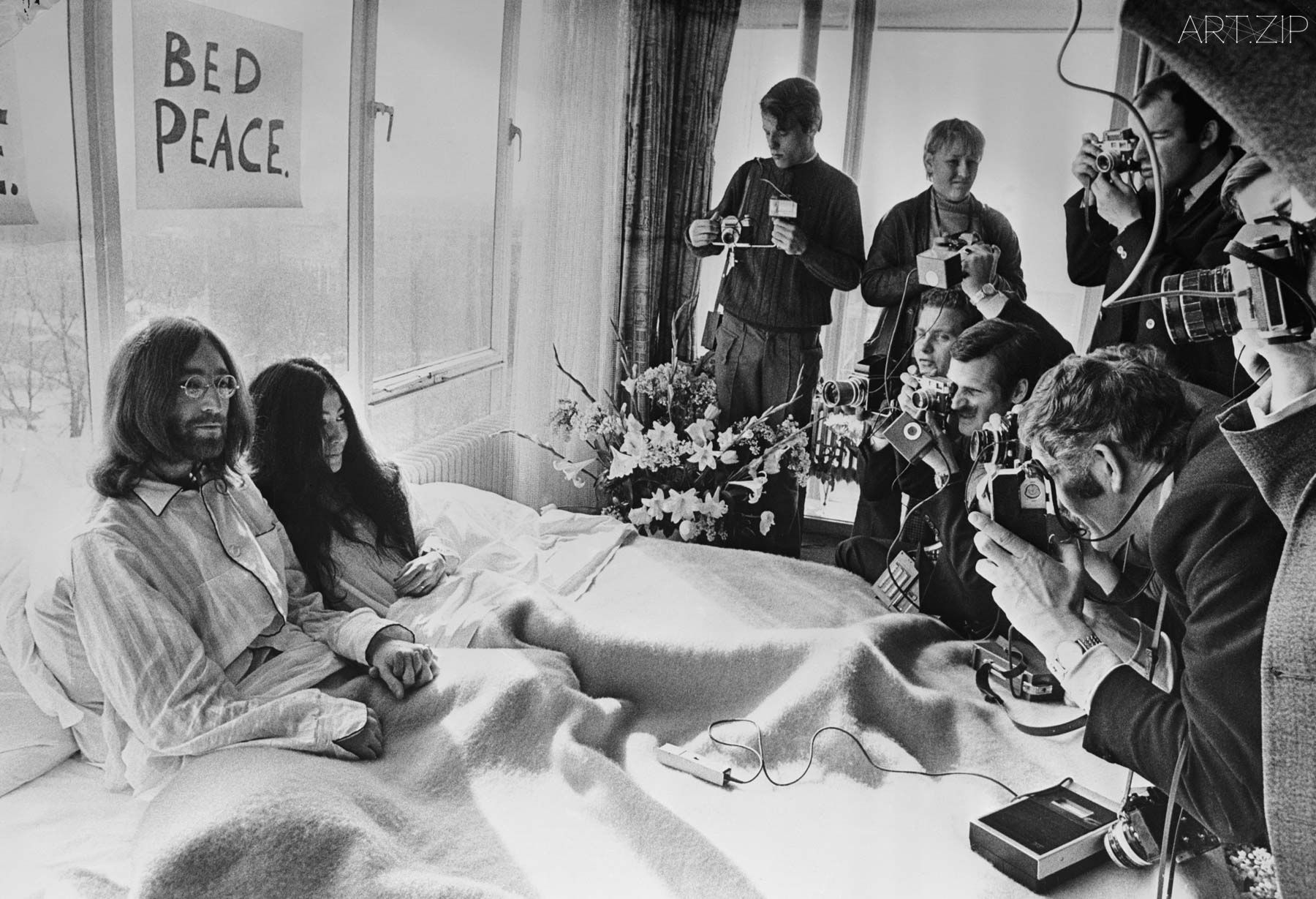
15 February – 1 September 2024
Tate Modern, London
The exhibition works on the edges of several divides. Firstly, the exhibition might be read as a divide between the counterculture and the mainstream art world, and within this a divide between analytical conceptual art with all its schematic categories and a more amorphous, poetic mode of figuring of ideas. Then there is the more familiar divide between mainstream performative media and marginal, gestural networks. This marks a transition from softly spoken to loud and eruptive expression. Whatever way these divides also form orientations towards what type of artist the audience is paying attention to.
The preceding room in Tate gallery complex is a small exhibition of Jannis Kounellis which is tonal opposite to Yoko Ono in that it is dark, even brooding, extremely heavy in terms of both materials and mood, raw in terms of the appropriation of various forms of matter, and with all these features, expressive of deep, striated time. It is an altogether different form of poetics than the light, even whimsical poetics of Yoko Ono. But this is just a situational aside.
There is barely any use of colour in this survey, and when colour is employed, it signifies water or sky, so is literal, as opposed to expressive. Therefore, a whiteness prevails, or alternatively the black and white of the document or of the documentary film. Does white then operate as a governing code: sparse, bland, spiritual, de-materialised, empty?
這場展覽在多重分界的邊緣上運作。首先,它可以被解讀為反文化與主流藝術世界之間的分界,同時也涉及分析性觀念藝術(以綱要化分類為特徵)與更模糊、詩意的觀念呈現方式之間的對立。其次,展覽觸及了另一種更為熟悉的分界:主流表演性媒介與邊緣化、手勢化創作網絡之間的張力。這種對立標誌著從柔聲細語到響亮爆發的表達轉變。無論如何,這些分界還在某種程度上引導觀眾,指向他們應該關注哪種藝術家及其作品。
泰特美術館的另一個展廳展示了雅尼斯·庫內利斯(Jannis Kounellis)的小型展覽,其基調與小野洋子形成了強烈對比——庫內利斯的作品充滿黑暗、甚至壓抑的氛圍,無論是材料還是情感都極為沉重,對物質形式的挪用也格外粗獷。這些特徵傳遞出一種深刻的、層次分明的時間感。相比之下,小野洋子的作品則輕盈而充滿奇思妙想,展現出完全不同的詩意形式。然而,這種對比僅僅是情境上的插曲。
在小野洋子的展覽中,顏色的運用幾乎被極大地壓縮,僅在少數情境中出現,而當顏色被使用時,往往指涉水或天空——這是一種具體且直白的象徵,而非表達性的運用。因此,白色成為展覽的主導色彩,或是黑白影像與文檔的二元對比。那麼,白色是否構成了一種支配性的編碼?它是否象徵著稀疏、平淡、精神性、去物質化,或甚至空無?
The term slight might be employed looking at this exhibition. Lightness of touch, marginality, minor modes, non-systematic approaches to medium, are all components related to this designation. A soft form of surrealism, just a touch of Zen, poetic conceptualism, informality of gestures, hip politics, are all woven together into a loosely managed strategy of persuasion.
可以用「微妙」(slight)一詞來形容這場展覽。輕盈的筆觸、邊緣化的表達、次要形式的運用,以及對媒介的非系統化處理,構成了這一特質。一種柔和的超現實主義,隱約的禪意,詩意的觀念藝術,隨性的動作語言,再加上時髦的政治姿態——這些元素交織在一起,構建出一種看似鬆散卻極具說服力的敘事策略。

Jannis Kounellis, [no title] 1999
Like Yoko Ono, Yayoi Kusama was seen in the 1960’s as part of the counterculture circuit, as much as being in an art world network. This was in part due to the chauvinism of the white artworld structure and a desire to discover more congenial, even transgressive structures. In part the counterculture was structured by outsider philosophy that articulated the need for radical change in the social structure. Rather than being a hierarchical order of a perceived establishment, the counterculture was structured by informal networks and was largely ethically co-operative. The spaces which opened as venues for this network tended to suit improvised, cross media work outside of established genres. This then led to a fluidity of within forms of aesthetic expression which closed the gap on the distinction of art and life. The Fluxus movement, to which Ono belonged, was a mixture of this, informal venues, improvised structures of assemblage, and critical resistance to aesthetic hierarchies, but it was the epitome of the aesthetics of the in-between that was of its time that was a marked attribute of the projects that arose from this matrix of projects.
與小野洋子(Yoko Ono)相似,草間彌生(Yayoi Kusama)在20世紀60年代既被視為反文化圈的重要成員,同時也活躍於藝術界的網絡之中。這一雙重身份的形成,一方面源於當時白人主導的藝術界結構中的沙文主義,另一方面則來自於對更具包容性、甚至越界性結構的探索與渴望。在某種程度上,反文化由一種「局外人哲學」構建而成,這種哲學呼籲對社會結構進行徹底的顛覆與重建。與傳統的等級制度式秩序不同,反文化的核心是基於非正式網絡的運作,其特徵是倫理上的合作與共享。
這些為反文化網絡開放的空間,往往更適合即興創作與跨媒介的作品,這些創作突破了既有的藝術類型邊界。正是這種開放性,帶來了藝術表現形式的流動性,並縮小了藝術與生活之間的鴻溝。小野洋子所屬的「激浪派」(Fluxus)運動,恰恰體現了這一理念。它結合了非正式場地、即興式結構的拼接,以及對美學等級制度的批判性挑戰。更重要的是,「激浪派」的核心在於創造了一種「介於其間」的美學——這種過渡性的特徵完美契合了當時的文化氛圍,並成為從這一運動矩陣中湧現的諸多項目的顯著標誌。
It is of interest how a relatively obscure event or happening which took place in 1964 in Kyoto and in 1965 in New York could have expanded its outreach to such an extent that it can be universally cited as one of the inaugural pieces within the history of that genre of live work. The ‘Cut Piece’ was based on the intuition that the body consists of curves, whereas the scissor cuts in straight lines, so the relationship between the two types of lines is one of disjunction. The conations of violence against women have also developed as part of the expansion of the effect of this work which is a demonstration of how the signified quality of a work is expressive of how an artwork is a becoming. As a work is still has resonance even despite the passage of time it has endured.
有趣的是,一場分別於1964年在京都和1965年在紐約上演的相對冷門行為藝術,竟能逐步擴展其影響,最終被普遍視為現場藝術類型的開創性之作。小野洋子的《剪衣》(Cut Piece)基於一個簡單卻深刻的直覺:人體由曲線構成,而剪刀的剪切則是直線,兩者之間的緊張關係呈現出一種不協調的對立。隨著時間推移,這件作品的影響力逐漸深化,其中隱含的對女性暴力的暗示也成為其解讀的重要維度。這一過程證明了藝術作品的意涵與其「成為」(becoming)的動態本質息息相關。《剪衣》正是這種「成為」的典範,展現了藝術如何在時間的流逝中持續保持生命力,喚起觀者不斷的共鳴。即便數十年過去,這件作品的影響力依然強大,餘韻悠長。
So, who is Yoko Ono? Many people have an opinion which is not necessarily based on the notion that she is first and foremost an artist. She might be famous simple because she is famous as icon, and that might be a clue to her way of projecting her persona is at the root of her project. This might be a way of saying that she doesn’t really add up, because none of the narratives which might be on offer form a coherent picture. One thing is clear though, is the way she is subject to rumour, gossip, and seemingly endless speculation. This exhibition is based partly on a desire to form a corrective to this noise by putting the work before the persona. It also announces a reality bereft of the interview or chat show formats, or another way of saying, the death of the author and the beginning of the work starts to come to the fore.
In terms of her relationship to music, Yoko Ono spans the influences of the avant-garde formulations and practices of figures such as La Monte Young, John Cage, and David Tudor and this being absorbed into the fringes of the pop world. This transition became one of the central narratives of her life with music even though some of this remains either obscure or a footnote in nonsense if one is sardonic in. One of the main questions which this transition raises is when is something music and when is it sound? It is a question that still reverberates today.
那麼,小野洋子(Yoko Ono)究竟是誰?許多人對她的看法往往並不基於她作為藝術家的身份。她或許是因「名人」這一符號而為人熟知,而這種符號性的自我投射方式,可能正是她藝術項目的核心線索之一。可以說,她的形象始終未能形成一個統一的整體,因為關於她的各種敘事從未拼湊出一幅完整而連貫的圖景。但有一點無可否認:她始終是謠言、八卦和無窮無盡的猜測的焦點。這場展覽部分基於一種對這些「噪音」的糾正意圖,試圖將作品置於她個人形象之上。同時,展覽也呈現了一種新的現實——一種遠離採訪和脫口秀模式的現實。換言之,這是「作者之死」的宣告,作品本身開始成為關注的核心。
在她與音樂的關係上,小野洋子跨越了拉蒙特·楊(La Monte Young)、約翰·凱奇(John Cage)、大衛·圖多(David Tudor)等人的前衛實驗影響,並將這些影響帶入流行音樂的邊緣領域。這種過渡成為她音樂生涯的核心敘事之一,儘管其中一些內容至今仍顯得晦澀難懂,甚至在某些尖酸的評論中被視為無稽之談。然而,這一過渡引發了一個至今仍在迴響的問題:什麼時候聲音成為音樂?又什麼時候音樂僅僅是聲音?
這個問題不僅定義了她的藝術實踐,也觸及了關於藝術和表達形式的更廣泛的討論——一種關於界限模糊和不斷轉化的深刻反思。

25th March 1969: A week after their marriage, musicians John Lennon and Yoko Ono receive the press at their bedside in the Presidential Suite of the Hilton Hotel, Amsterdam. The couple stayed in bed for seven days ‘as a protest against war and violence in the world’. Yoko Ono and John Lennon during Bed-In for Peace, Amsterdam, 1969. Courtesy Yoko Ono. Photograph by Ruud Hoff. Image: Getty Images / Central Press / Stringer
There is a late Modernist principle that the pre-occupations of the avant-garde and the mass media spectacle never really mix in any satisfying manner, except for Andy Warhol. The fact that he seemingly cracked the code of how to succeed with this schism is the source of much speculation, but it remains an exemplar of how truisms might not always ben born out of solid or reliable truth. Does Yoko Ono fit a case as one who has flirted with destroying the codes which undermine the desire to maintain the difference within this structure of culture to formulate new principles, or is it rather the basis of a passive drift that enforces a nihilistic drift within the culture that lacks the passion with which it might solicit resolutions? Overall, there is only a muted set of signs of persistence orientated toward to the engagement with such forces.
It is possible to claim that there have been a whole number of modernisms and that there might have been virtue in being touched by several of them without being weighted by anyone of them. Yoko Ono has traversed mediums and worlds, mixed talking too much with too little, raided the esoteric workshop of the mind with common speech, and attempted to introduce an ethics into the free play of form. She has above all else, survived the prison house of fame.
有一種晚期現代主義的觀點認為,前衛藝術的關注點與大眾媒體的奇觀之間幾乎無法以令人滿意的方式融合,除了安迪·沃荷(Andy Warhol)之外。沃荷似乎破解了這種分裂中如何取得成功的密碼,這一事實成為無數猜測的源頭,同時也揭示出,一些被視為「真理」的觀念,未必真正建立在穩固或可靠的基礎之上。那麼,小野洋子是否也屬於這樣一種例外?她是否試圖摧毀那些削弱文化結構中「差異」之欲望的規則,從而構建新的原則?還是說,她的行為更像是一種被動的漂流,助長了一種虛無主義式的文化漂移,缺乏熱情去尋求解決的方向?總體而言,針對這些文化力量的持續參與,僅有一些微弱的符號能夠提供線索。
或許可以這麼說,現代主義從來不是單一的存在,而是由多種面貌構成的。有所觸及多種現代主義的思想與形式,而不被其中任何一種壓垮,或許正是一種值得讚頌的美德。小野洋子跨越了不同的媒介與世界,在話語的光譜中遊走於過多與過少之間,從心靈的神秘工作坊中提取靈感,並將其與通俗語言結合,試圖將一種倫理觀念引入形式的自由遊戲中。最重要的是,她成功地從名聲這座囚牢中脫身,並在這之中存活下來,這或許才是她最大的成就之一。
Text by Jonathan Miles






















